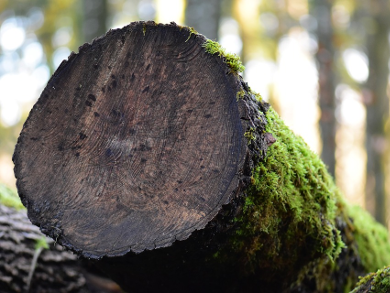Jianwei Song, University of Maryland, College Park, USA, and colleagues have made wood ten times more stable and harder than before through a two-step process. The treated wood is three times as dense and so strong that it can hardly be damaged by cracks and scratches.
In the first step, the researchers dip the wood into a hot bath of NaOH and Na2SO3. This treatment removes part of the lignin and hemicellulose from the wood. This makes the wood more porous and less stiff. However, the cellulose fibers of the wood are not affected. In the second step, the wood is compressed perpendicular to the growth direction at 100 °C. Under this pressure, many voids in the wood structure collapse, leading to a unique microstructure. The completely collapsed cell walls lead to a drastically increased contact surface between adjacent cellulose strands in the cell walls and fiber layers, which are stabilized by numerous hydrogen bonds.
This simple process works on a wide variety of wood types. While untreated wood significantly swells and softens at high humidity, the compacted wood barely loses strength and stability even at 95 % relative humidity. If the surface of the wood was painted, the material was even completely immune to moisture.
According to the researchers, their material rivals many metals with its tear resistance, stability, and weight. This makes the treated wood a cost-effective, high-performance, and lightweight alternative to materials such as steel, which could be used in cars, airplanes, and buildings.
- Processing bulk natural wood into a high-performance structural material,
Jianwei Song, Chaoji Chen, Shuze Zhu, Mingwei Zhu, Jiaqi Dai, Upamanyu Ray, Yiju Li, Yudi Kuang, Yongfeng Li, Nelson Quispe, Yonggang Yao, Amy Gong, Ulrich H. Leiste, Hugh A. Bruck, J. Y. Zhu, Azhar Vellore, Heng Li, Marilyn L. Minus, Zheng Jia, Ashlie Martini, Teng Li, Liangbing Hu,
Nature 2018.
https://doi.org/10.1038/nature25476




